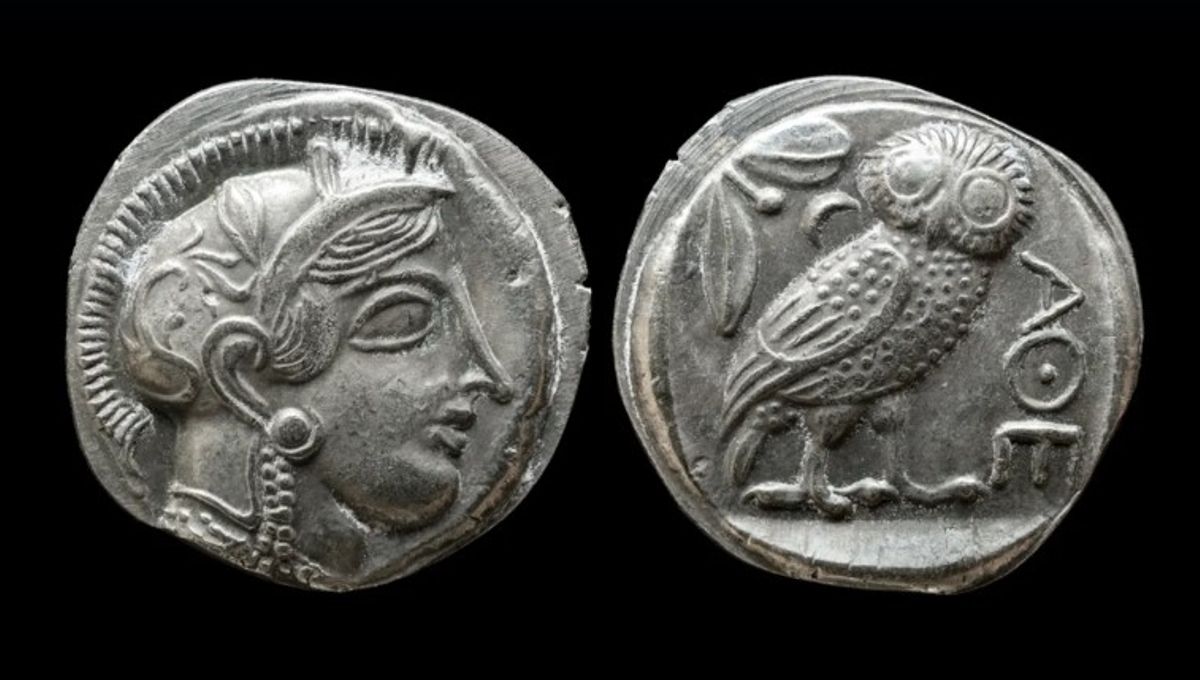
Long before Visa and Mastercard, a currency known as the owl was the accepted payment method across much of the civilized world. Originating in Ancient Greece in the sixth century BCE, the avian-themed silver coins were renowned for their extraordinary purity and helped to change the entire course of history by financing some of the most significant Greek military campaigns.
Exactly when the first owl was minted is still the subject of some debate, although most historians think the coin was introduced by Hippias – the last tyrant ruler of Athens – in 512 BCE. The tetradrachm – so-called because its weight was equivalent to four drachmae – replaced the previous heraldic coins known as Wappenmünzen, and entered circulation following the discovery of the vast silver mines at Laurion in Attica.
Minted to the Attic standard of 4.3 grams per drachma, the coins feature the head of Athena – goddess of wisdom – on one side, and her patron animal, the owl, on the other. Accompanying the owl are an olive branch, a crescent moon, and the letters “ΑΘΕ”, meaning “of the Athenians”.
It’s this inscription that casts doubt over the origins of the owl. After all, being a tyrant, Hippias was not one for sharing the wealth, and coins minted under his authority typically bore his name rather than a declaration of public ownership.
For this reason, some historians believe the owl may have been introduced after Hippias was defeated and replaced by Cleisthenes, who brought in a new, democratic form of government. Under this scenario, the symbolism of the owl may have been chosen to represent the Greek polity and the social and economic values of Classical Greece.
Regardless of its origin or meaning, however, the owl went on to play a massive role in ensuring Greek prosperity. Consisting of around 99 percent pure silver, the coin quickly gained a reputation for its consistency and quality, which resulted in merchants from far and wide accepting and using the owl.
Not only did the coin become the major international currency of the ancient world, but it also financed the creation of a navy which ensured Greece’s victory over a Persian invading force in 480 BCE. Seeking to overthrow the democratic regime and re-install Hippia, the Persians represented an existential threat to Greece, and it’s fair to say that without the intervention of the owl, the Classical Greece that we all learn about in history class probably wouldn’t have survived for long.
Ultimately, it’s still unclear exactly which ruler introduced the owl or why. What we do know, however, is that the currency was used for around 400 years and helped the likes of Aristotle, Plato and co to flourish.
Source Link: Why Did Ancient Silver Coins Have Owls On Them?